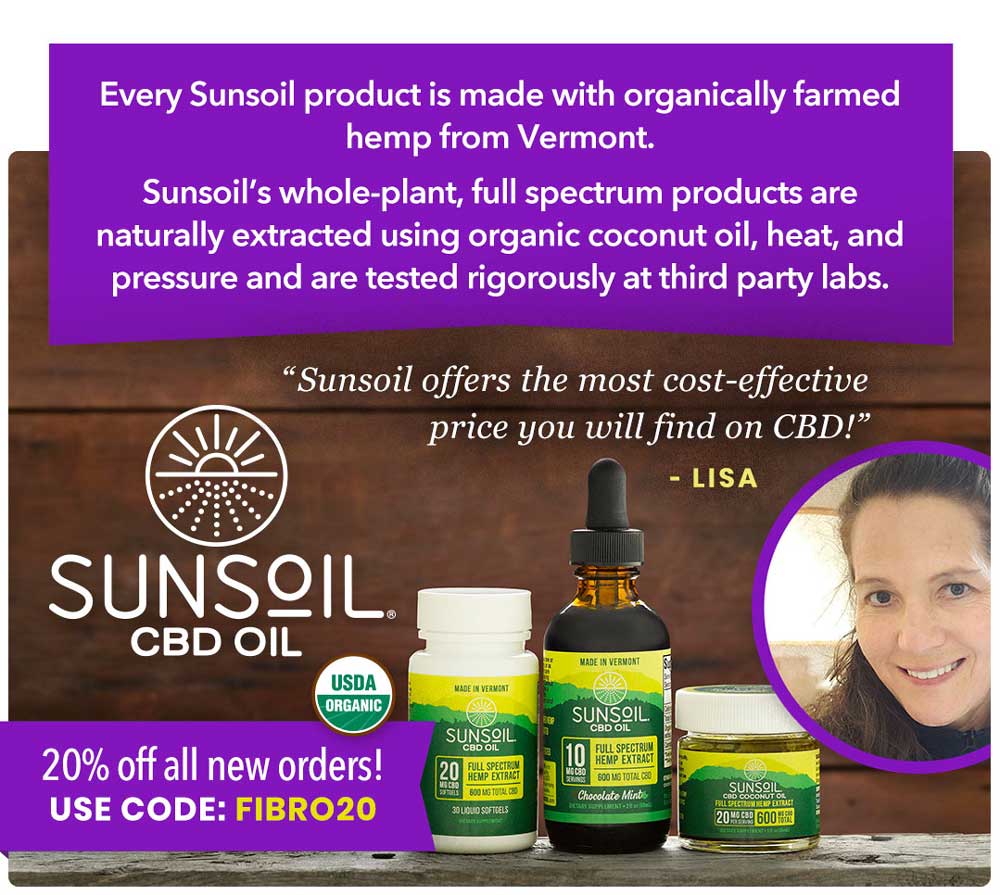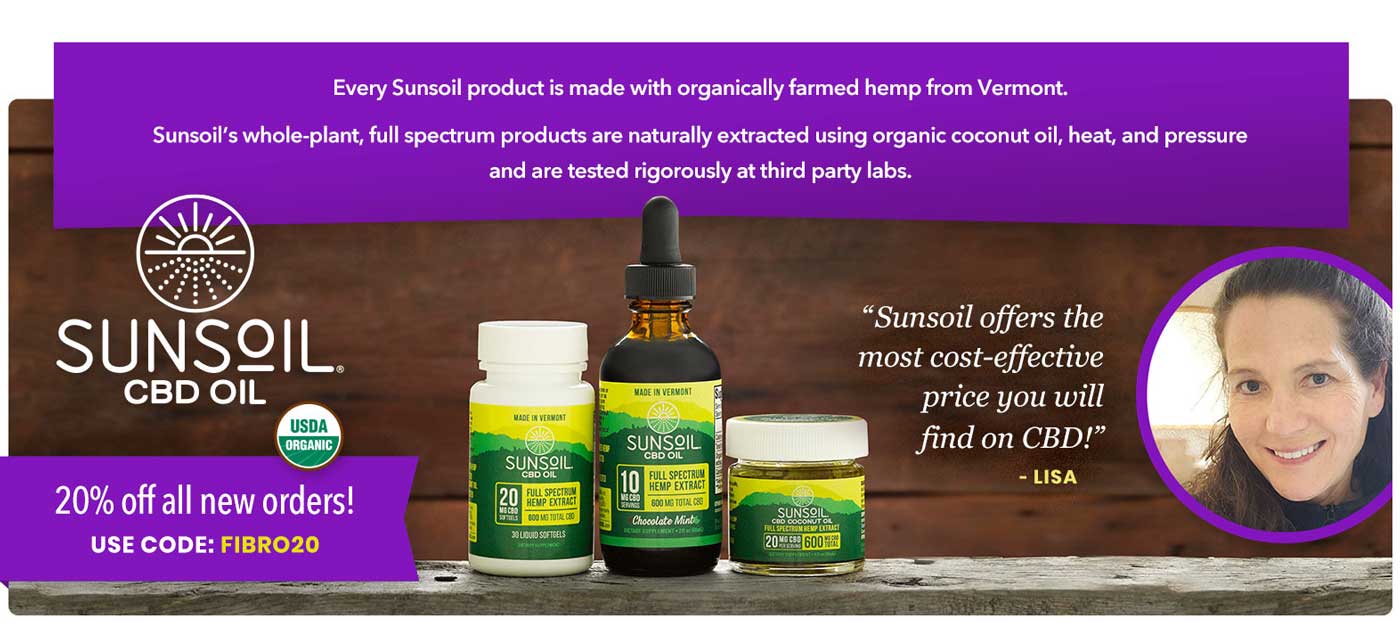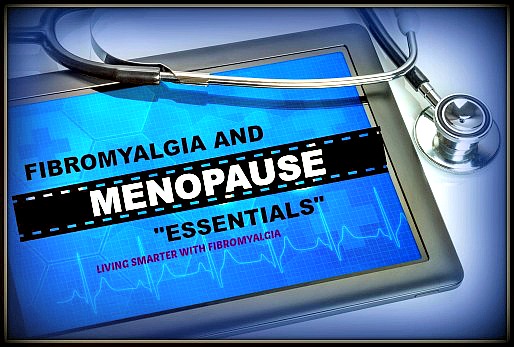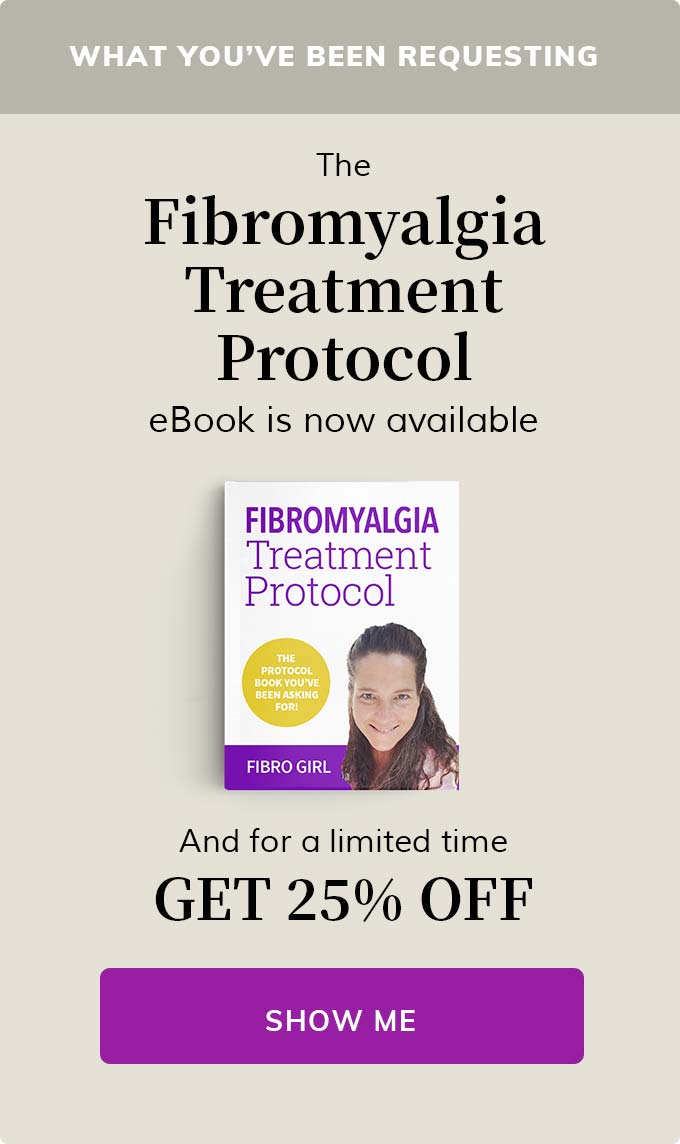Fibromyalgia and Menopause Essentials
Many
women living with fibromyalgia and menopause have a fear of going into menopause that is either natural or induced surgically through hysterectomy.
More than ever
before we have to address lifestyle factors and what I like to call “menopause
essentials” in order to avoid the pitfalls often associated with fibromyalgia and menopause. I want to
stress something of great importance here.
Avoid saying and thinking that your fibromyalgia will get worse
during or after this time.
Oh yes, it can and will get worse if we do not
adhere to these menopause essentials we are going to outline in this article
series on menopause and hormones, but is it the fibromyalgia, the severe
depletion of hormones and system support, or
is it a combination of both?
We think it is both, and along with normal
aging factors, we must address this issue carefully and thoughtfully.
Working as a practitioner in holistic health for many years, living with fibromyalgia and other fibro co-conditions since a young age, and going through surgically induced menopause myself, I continue to refine the “menopause essentials” and the best protocols when living with fibromyalgia and menopause.
Please do not overlook the importance of this series of articles as I implement a combination of tools that will aid anyone in understanding how to better approach the issue of fibromyalgia and menopause.
There will of course be individual decisions that need to made with your doctor in regards to hormones and hormonal support therapies, but if your current hormone replacement is not working for you OR you are concerned about the safety and effectiveness in the long run, then more knowledge is power.
Maybe you are not quite yet to peri-menopause or maybe you are way past the
menopause days and think this doesn’t apply to you, but there could be
adjunctive progesterone hormone therapy that could benefit you and your
fibromyalgia and menopause symptoms. If you are also dealing with environmentally induced anxiety
symptoms or thyroid and adrenal stress, this could also be of benefit.
If you
have suffered with estrogen dominance, you likely felt the result of that in a
negative way and rightly so because estrogen is inflammatory whereas
progesterone/testosterone are anti-inflammatory.
Focus On Having More Control
So
here is some good news. Let’s say you have lived much of your younger adult
days like myself with estrogen dominance. You have lived with hormonal
imbalance.
Your body has gone “haywire” in the hormone department and
over-produces estrogen but under produces progesterone and/or testosterone.
Then, you go through surgical or natural menopause.
Now, it is possible through
natural bio-identical hormone replacement to have some control as opposed to
when your ovaries were playing “havoc” and you had little control.
You cannot
get up every morning and tell your ovaries how much hormone to produce for you
that day, but with replacement, you are in control. Stay positive and keep
working at it.
NOTE: an initial visit to a hormone specialist (independent of your endocrinologist or your ob/gyn) is a worthwhile
investment that can make a difference in your fibromyalgia and menopause for years to come.
Fibromyalgia
and Menopause
Essentials and Lifestyle Factors
Before we get into other factors, let’s be sure we are addressing the basics.
1. If we ever needed a comprehensive vitamin/mineral regimen, it is during and after menopause. Minerals affect estrogen production and balance. However, with minerals such as calcium, it is imperative to only get your calcium through either food, vegetable juices or in food grade supplement form such as raw calcium (refer to calcium/vitamin K article).
Increasing calcium intake through
inferior supplements can interfere with vitamin D production and cause an
imbalance.
Mineral synergy with minerals like calcium and magnesium and
balanced hormones is the best insurance for bones and prevention of
osteoporosis. We also need adequate hydrochloric
acid (HCL) in the stomach and natural enzymes from raw foods.
As a colon therapist, I am not just interested in “detoxing” the body, I am
even more interested in nutrient absorption in the small intestine and keeping
the initial elimination channels
open (liver, gallbladder, kidneys) for instance.
A good multi vitamin is important. In many cases, we may need an additional
vitamin B complex, vitamin C, vitamin D in liquid emulsion form, magnesium,
malic acid, selenium, boron, ubiquinol form of CoQ10, and zinc(note: we have our favorite 100% additive free multi on the supplement page, refer to navigation bar)
Extra benefits include: Vitamin C supports collagen production for our skin;
Boron supports estrogen production; ubiquinol and vitamin B complex provide energy; and magnesium and malic acid support muscle health and relaxation.
With Vitamin K, take caution if taking
warfarin or certain prescription medications, blood thinners, etc. Talk with
your Doctor.
2.
Choose organic foods whenever possible. It doesn’t have to be all or nothing.
Just make it a priority. Not only is organic food more nutritious, but avoiding
pesticides (endocrine disruptors) will enhance the healthy side of the hormone
issue (phyto-estrogen vs. zeno-estrogen)
Phyto-estrogens include things like flax seed meal and broccoli sprouts ; in
fact, those are two of my favorite food substances to use when enhancing
phyto-estrogens. I often include these in my blended drinks to really increase
the overall nutrient value.
Zeno-estrogens are essentially endocrine disruptors; they are not natural to
the body. Because the fibro body is ultra-sensitive to any disruption in the
endocrine system, this can exacerbate all fibromyalgia symptoms. Again, this is
not about perfection, but avoiding hormones, antibiotics and pesticides in food
as much as possible is essential for those of us living with fibromyalgia and menopause.
Allow me to share a few paragraphs from a resource, (“Menopause Naturally” by Kathleen Fry, MD. and Claudia Wingo, R.N., Medical Herbalist), and then I will add more in-depth information that is more current for today’s treatments of fibromyalgia and menopause.
"Phytoestrogens have a normalizing effect. They work in cases of estrogen
dominance, characterized by fibroids, fibrocystic breast disease, and PMS. They
also work when the body is not producing enough estrogen, as in the case of
menopause. While phytoestrogens mimic estrogens, they are 1/400th as
potent as synthetic estrogens.
For menopausal symptoms, we have found that phytoestrogens containing herbs
offer significant advantages over conventionally prescribed estrogen.
Although
estrogens may pose significant health risks, including an increased risk of
cancer, gallbladder disease, and stroke, phytoestrogens are not associated with
these side effects.
Foreign estrogens, known as zenoestrogens, come from hormones in chicken,
herbicides, pesticides, and other environmental or food sources. They may mimic
estrogens in the human body. However, because they are foreign substances, these
estrogens do not fit perfectly into the body’s estrogen receptor sites.
They
can actually make menopausal symptoms worse, or may contribute to cancer and
other illnesses. Natural phytoestrogens are a better fit. They also help block
the foreign estrogens from attaching to the receptor sites, so the body can
easily get rid of them.”
Natural Progesterone Options
Because
not every woman is going to respond to the herbal treatments for fibromyalgia and menopause (and
maybe we are working to simplify our supplement regimen), I personally believe
and have found agreement in multiple resources, that natural progesterone (in
troche sublingual or cream form) continues to be the most effective at treating
a variety of symptoms we experience in menopause and fibromyalgia.
Natural progesterone has positive side effects. Dr.Platt, author of “Adrenaline
Dominance”, believes that the osteoporosis epidemic is often due to low levels
of progesterone. You will need to work with your doctor on which form of progesterone is right for you, either cream or troche form (oral) as we want to bypass the liver whenever possible.
A
little of my own personal experience: Since I was a teenager, I tended toward hormonal
imbalance, then into my twenties and thirties, estrogen dominance. I never took
any kind of estrogen hormones for any reason. My body did not need more
estrogen. However, when I was put on natural progesterone for PMS in my
twenties, it helped the symptoms a great deal.
As I got busy in my life later
on, I stopped using the progesterone for whatever reason, and continued to
struggle with imbalance, but I would also have times where I did feel balanced
without any outside assistance. I had the typical PMS, fibrocystic breast
disease and eventually fibroids.
Awhile back, after my own hysterectomy, I visited with my hormone specialist
right about the time the hot flashes were kicking in and getting unbearable (about
2-3 months post-surgery). I opted for natural bio-identical progesterone and testosterone/DHEA. Now,
there are a couple of different forms we advocate but this does not include
straight oral capsule form.
1. Natural progesterone cream. This
is best to be obtained by prescription, as the over-the-counter brands do not
contain the more therapeutic dosages needed to mediate symptoms and protect the
body.
2. Oral Dissolve Troche. This is
like a sublingual form, which dissolves VERY slowly between the cheek and gum. It is different from capsule form but may still have to go through the liver.
What dosage will be right for you? Work
with your doctor to find the most effective one.
Most women find a dosage
between 150-200 mg progesterone daily helps to eliminate hot flashes, protect
bones, and create a greater sense of well-being. However, I break it
up to keep a more steady stream of relaxing progesterone in the blood stream. Progesterone has a rather short lifespan in the body.
I
take 50 mg. before breakfast, and then 100mg.
about 30 minutes before bedtime.
I use the troche sublingual form and the cream form. Work with your “hormone
specialist” doctor to prescribe and fine tune
your dosages (Note that your ob/gyn may not be your best option for a "hormone specialist".).
Changing Your Hormone Replacement Strategy
If
you are currently taking synthetic estrogens and you have concerns about health
issues associated with them, you will need to work with your doctor on weaning
off of that hormone therapy before starting another.
This is very important.
The doctor would reduce the hormone therapy slowly. However, even if you
decided to stay on estrogens like Premarin for whatever reason, you could still
talk with your doctor about adding natural progesterone to balance.
Remember,
natural progesterone also helps with sleep. When I started taking 100 mg. at night, I noticed it putting me to sleep within about ten minutes of
getting into bed. Now, that is likely the most POSITIVE side effect we could ever
ask for when living with fibromyalgia and menopause!! Again, I take 100mg before bed.
No Bones About It
With fibromyalgia and menopause, comes the need for extra bone protection.
Along with natural progesterone which helps bone density, we also want to
consider a few supplements and natural foods.
Of course, juicing vegetables
will give us raw nutrients and enzymes right into our bloodstream. We don’t
have to juice every day though. In my juicing/blending article here in the
website, I recommend making juicing a part of your weekly schedule.
I also use a small amount of MACA powder in my blender drinks. Maca is a great hormone balancer and excellent for menopause. Work with your doctor on dosage although this can be obtained online or at your local health food store.
Fibromyalgia and Menopause Essentials
A few of my “menopause essentials” lifestyle and supplements for fibromyalgia and menopause include:
- weight bearing exercise (3-5 days per week)
- stress control (use our mind body techniques in this website. In particular check out my "Coping with Fibromyalgia" article. Stress affects bone loss.
- Biosil (collagen for bones, hair and skin in a very easy to take liquid that is better tolerated in the GI tract than some other forms of collagen)
- vitamin D emulsion (shown in our vitamin D article here on the website - easier to assimilate)
- natural progesterone (consult with your doctor and consider our protocol for usage)
- Vitamin K (helps with calcium absorption into bones, however take caution if taking warfarin or certain prescription medications, blood thinners, etc) Talk with your doctor.
- Garden of Life Grow Bone system (this is the raw calcium I refer to above and strontium, taken at different times of day to promote absorption)
- Boron (helps with uptake of estrogen and mineral balance)
-
sun exposure (natural vitamin D from the sun is best, try
for 20 minutes per day when weather permits)
When Your Doctor Tells You To Drink Milk
Ok,
many people are avoiding dairy products these days. With allergens and
antibiotics (zenoestrogen), this may be a food group that you have already
eliminated. Again, using the above suggestions will support bones. Dairy
without fat is useless. Never use non fat dairy products. They are too high in
casein (dairy protein) and no calcium will be absorbed anyway.
Not everyone has
difficulty with dairy, so if you include dairy in your diet, use organic goat milk
products, ghee, and/or no less than 2% fat or full fat dairy. Almond milk or coconut cream only have small amounts of calcium, depending on
whether store bought or made at home.
NOTE: This is the first article of a series that will also include "fibromyalgia and menopause" exercises and lifestyle factors that will address both increasing bone density and strengthening those areas of the body that can become more vulnerable after surgically induced or natural menopause.
Before you leave, my sitemap can provide you with a "God's-eye" view of this website laid out in "outline format".
Stay connected by joining our unique Email here at Fibro Repair Email
Home > Fibromyalgia Symptoms > Menopause Essentials
Didn't find what you were looking for? Search for it:
living-smarter-with-fibromyalgia.com
©2013-2024 All Rights Reserved
FibroFitPeople, LLC ;©2024 All Rights Reserved










